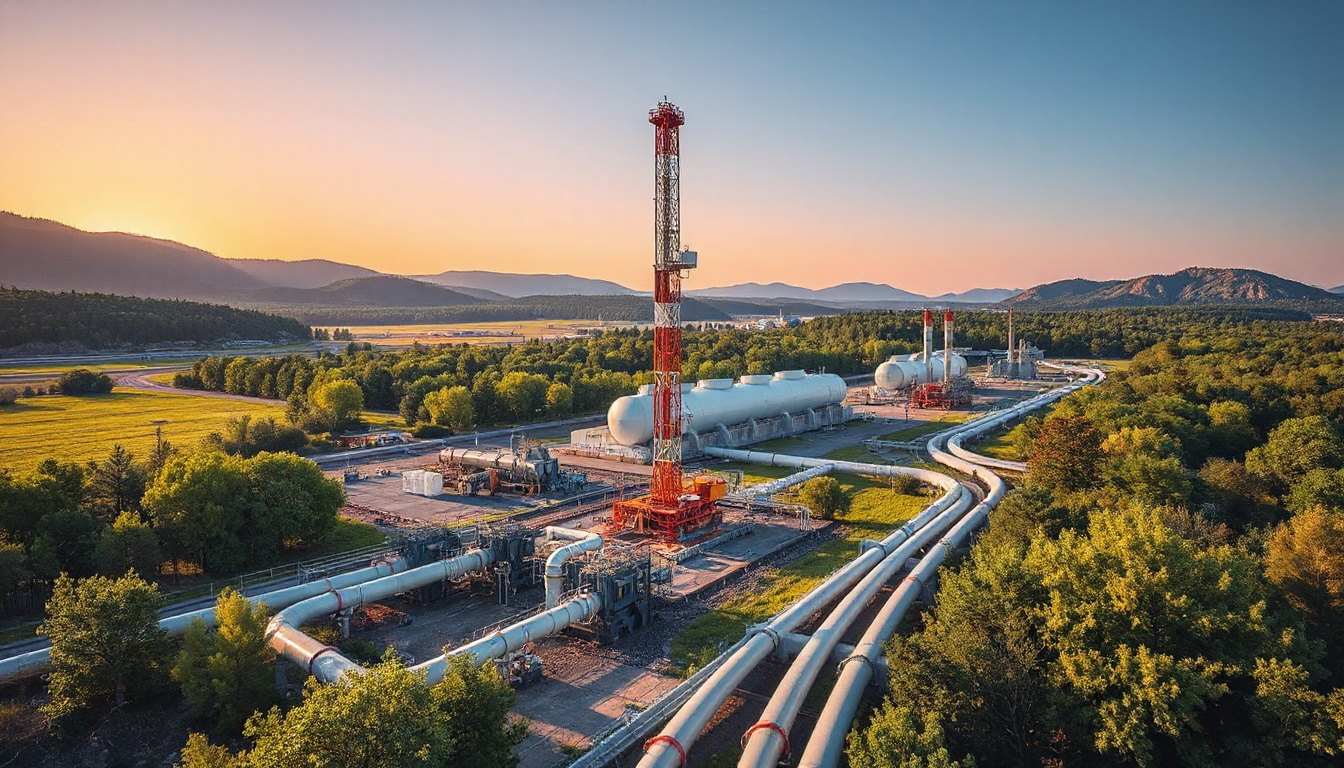As the world shifts towards more sustainable energy solutions, natural gas emerges as a powerful player in the energy landscape.
Often regarded as a bridge fuel in the transition to a low-carbon future, natural gas boasts numerous advantages that make it a compelling choice for energy production, heating, and more.
In this article, we will explore the composition and sources of natural gas, its economic benefits, environmental impacts, technological innovations, and what the future holds for one of the world’s most vital energy resources.


Environmental Impact: A Cleaner Alternative
### Environmental Impact: A Cleaner Alternative
Natural gas is increasingly recognized as a cleaner alternative to traditional fossil fuels.
As the world grapples with climate change and the need for sustainable energy solutions, understanding the environmental impact of natural gas becomes crucial.
One of the primary advantages of natural gas is its lower carbon emissions.
When burned for energy, natural gas emits approximately 50-60% less carbon dioxide (CO2) compared to coal and about 30% less than oil.
This significant reduction in greenhouse gases helps combat air pollution and mitigates climate change effects.
In addition to lower CO2 emissions, natural gas produces minimal sulfur dioxide (SO2) and particulate matter, which are major contributors to smog and respiratory illnesses.
By transitioning to natural gas, cities can improve air quality and public health, making it a viable and environmentally conscious fuel choice.
However, it is essential to address the methane emissions associated with natural gas production, as methane is a potent greenhouse gas.
Innovations in extraction and transportation technology are making strides in minimizing these emissions, enhancing the sustainability profile of natural gas.
Moreover, the use of stricter regulations and best practices in the industry can further decrease the environmental footprint.
In conclusion, while it is not without challenges, natural gas stands out as a cleaner alternative to more carbon-intensive energy sources.
Transitioning to natural gas can play a pivotal role in reducing our overall environmental impact, promoting a more sustainable future.
Technological Innovations in Natural Gas Utilization
## Technological Innovations in Natural Gas Utilization
Natural gas has long been recognized as a cleaner alternative to coal and oil, but the recent advancements in technology have propelled its utilization into new realms of efficiency and sustainability.
Understanding the latest innovations not only highlights the versatility of natural gas but also its critical role in addressing energy demands while reducing environmental impact.
###
1.
Enhanced Extraction Techniques
Innovations in drilling technologies, such as hydraulic fracturing and horizontal drilling, have revolutionized the extraction of natural gas from shale formations.
These techniques allow for the extraction of previously unreachable gas reserves, significantly increasing supply.
Enhanced oil recovery methods, including CO2 injection, are also being explored to further maximize yield and minimize emissions during extraction.
###
2.
Advanced Processing Technologies
Once extracted, natural gas requires processing to remove impurities.
New developments in separation technologies, including membrane separation and cryogenic distillation, are improving the efficiency of this process.
By using advanced materials and processes, they reduce energy consumption and increase yield, making natural gas more accessible and affordable.
###
3.
Modular LNG Plants
The rise of modular liquefied natural gas (LNG) plants represents a significant shift in natural gas utilization.
These smaller, scalable plants can be deployed more rapidly and at a lower cost compared to traditional large-scale LNG facilities.
This innovation not only increases the flexibility of natural gas supply chains but also enhances the potential for exports, meeting global energy needs in a more timely manner.
###
4.
Integrated Power Generation
Another major innovation is the integration of natural gas in power generation systems.
Combined Cycle Gas Turbine (CCGT) systems leverage the energy produced from burning natural gas and the resultant waste heat, improving overall efficiency.
As energy storage solutions improve, natural gas can complement renewable sources like solar and wind, providing a reliable baseload during low generation periods.
###
5.
Smart Technologies
In the era of the Internet of Things (IoT), smart technologies are making the management and monitoring of natural gas infrastructure more efficient.
Real-time data analytics and automated systems enhance the safety and reliability of transport and distribution networks.
These innovations help in promptly detecting leaks and optimizing maintenance schedules, thereby reducing risks associated with natural gas transportation.
### Conclusion
As we continue to innovate, natural gas stands out as a pivotal player in the global energy transition.
By exploring and embracing these technological advancements, industries and consumers alike can benefit from cleaner, more efficient energy solutions.
Staying informed about such progress allows stakeholders to make smarter energy choices that align with environmental goals and economic viability.
For industry professionals, it’s essential to keep an eye on these trends to leverage them in future projects and initiatives.
 November 2025
November 2025

